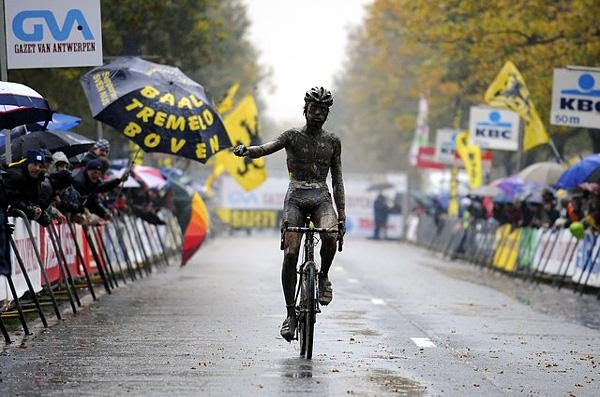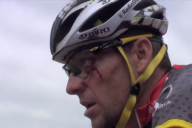Cycling has many holy grails. The Tourmalet, Alpe d’Huez, Ventoux, Stelvio, Gavia, Koppenberg, Arenberg to mention a few. I know this probably could be viewed upon as a bit early, but there is something going to happen in Belgium soon that is worth mentioning – the Kermesse season. Lasting twice as long as normal crits with the added flavor of bad road conditions, stir it all together with crazy Belgian fans and you have the recipe for fun, form build-up, and a potential pro contract – as well as the potential for carnage. This may be just fun to us, but it is also a possibility for local riders to shine, to be recognised. The Kermesse season begins in February, but if you think that’s too early don’t be sad as the season lasts until October.
The Basics
Kermesse is more or less a local race, but it is important to differ between the pro Kermesse and the amateur Kermesse. By “pro” they mean continental and higher, but don’t jump to conclusions too fast, the pace in these amateur races are incredible fast and you do need an active licence to race. If you don’t have a licence by your governing national cycling body or with the UCI, you can get a Belgian one. The licence costs about 12 euros and is basically a Belgian race licence, which you can use for several years. Normally, there is a race fee too, somewhere between 8-10 euros. One funny anecdote is that you pick up your race number at a local café, alongside beer drinking and smoking Belgians. When (if) finishing the race, you deliver the race number back at the same café, getting 5-6 euros back. How is that for some fun? Almost free. The name Kermesse also mean “festival” and sometimes there is a festvial to celebrate cycling where the actual race takes place.
As mentioned, the Kermesse is almost twice as long as regular crits, between 90-140 km. The circuit they race is somewhere between 5-12 km, often about 100 riders on the start line. Some Kermesse races see up towards 200 riders participating.
In February the Kermesse races take place on Saturdays and Sundays, but later in the season, you can pretty much ride every day of the week. Having 4-5 races on the weekend only makes it difficult to choose the right one. People gather in the streets, surrounding team cars and lining the fences cheering for their favourite. Still surprised the Belgians are crazy when it comes to cycling?
Tips & tricks
Most of the races begin at 1400 hours/2 pm local time, but registration is open two hours before that and closes 15 minutes prior to the race. That info can be found at Wielerbond Vlaanderen. The road conditions are known to vary, so if you bring your Zipp 404, be prepared to walk out there without one. Could also be an idea to bring pins yourself as there will be lack of pins as the riders pick up their race numbers. If you DNF for some reason, do not go home before the race is officially over. It could be that your number is picked for a contrôle anti-dopage and no-show on that is the same as testing positive.
Now you are thinking that the riders participating in these races are local heroes and crazy Belgians only, but that is not true. many pros use these races to build form towards important races. Last year, both Edvald Boasson Hagen and Kurt Asle Arvesen of Team Sky used several Kermesse races to build speed in front of the Worlds, as did many others. This is quality racing, let there be no doubt about that.
Summary
Kermesse races are fast and dynamic, and can be described as an experience rather than just a race. Expect continuous attacks, cobbles and locals all mixed into a flurry.
* * * * *
Sources:
Morten Jahr’s blog – Morten is a Norwegian Paralympic cyclist aiming for the London 2012 games
You can follow Pedalingtheroad on twitter, @Pedalingtheroad, or on his blog – pedalingtheroad.blogspot.com















3 Comments
Cool, article. I only race crits in the US, but am keen on seeing how they do it Europe.
@Antieuro Nothing like a seven-kilometer circuit that included a short hill, very narrow roads, corn fields, cows, sheep and, of course, spectators drinking beer. Race registration is nearly always in a pub, making the local after-the-race recovery beverage easy to find.
I am returning in 2012. Join me:
http://www.immersioncycling.com
http://www.facebook.com/RaceBelgium
Rick Adams
Many of the Kermesse Festivals have carnivals and are held on the day of the Patron Saint in the particular host town. An important element not mentioned is the overt presence of bookies who post odds and take bets. With the Amateur events, sometimes you show up to the cafe where registration is, and nothing is going on, but by the time you emerge from the changing room, barricades are in place, sound systems are going, and a crowd has gathered- like it all fell out of the sky during the 15 minutes you were inside! The photo for this article is great, but unfortunately it is from cyclocross and not a Kermesse, but of course cross is essentially a Kermesse on unpaved surfaces with obstacles!